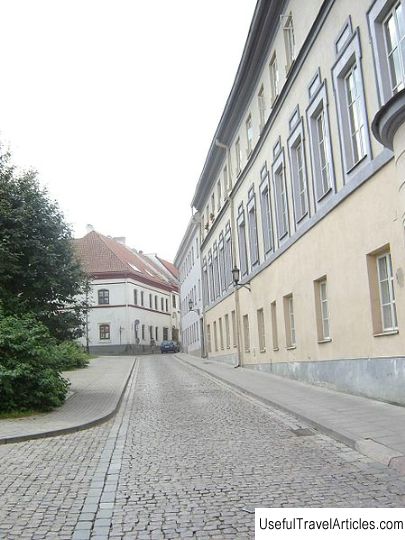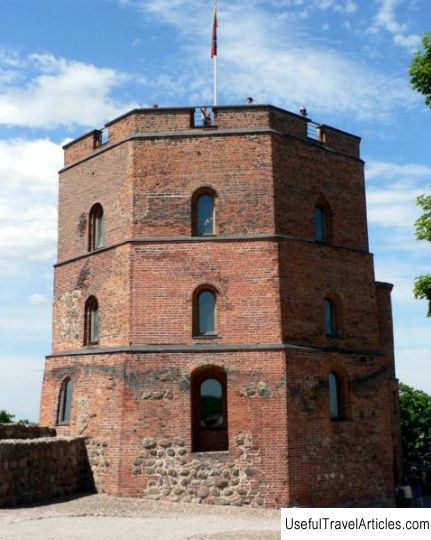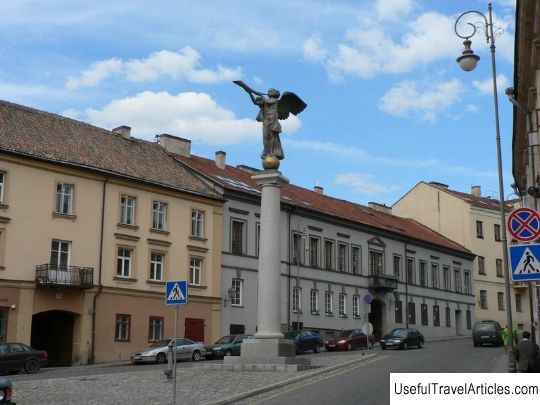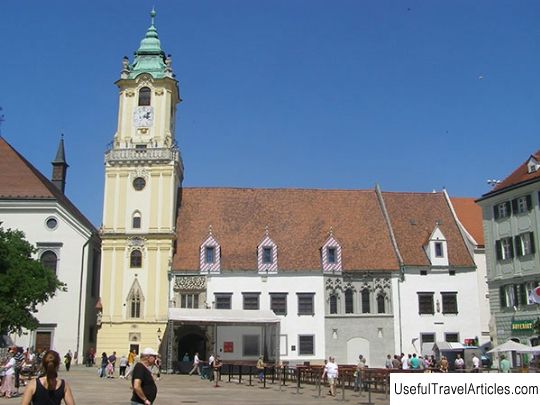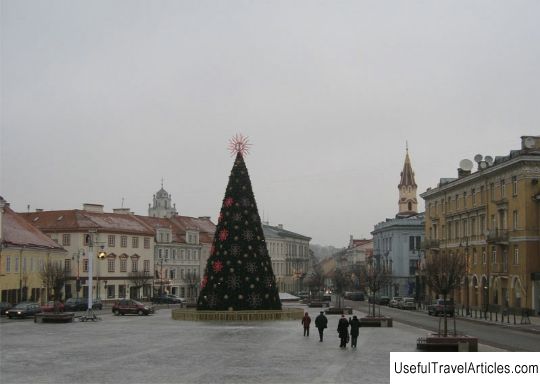Peles street (Pilies gatve) description and photos - Lithuania: Vilnius
Rating: 7,7/10 (100 votes) 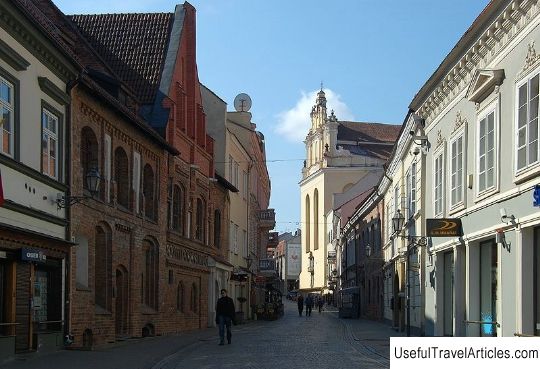
Peles street (Pilies gatve) description and photos - Lithuania: Vilnius. Detailed information about the attraction. Description, photographs and a map showing the nearest significant objects. The name in English is Pilies gatve. Photo and descriptionThere is a road in Vilnius that connects Vilnius Castle with Poland and Russia, which later turned into a street. At the moment, Peles Street is the oldest and most elegant street in the Old Town of Vilnius. The side streets that crossed it were small roads connected with the main road. For a long time, Vilnius Street was the main street that connected the Grand Ducal Castle with the Town Hall, as well as the city gates. The street passes from the Pyatnitskaya church to DJeyi street. Peles is surrounded by beautiful and picturesque courtyards with dark alleys, and on both sides of it there are Vilnius side streets: Svento Mikolo, Scapo, Lituratu and Bernardina. The appearance of the street can be characterized as colorful with a harmonious combination of various historical styles from Baroque and Gothic to eclecticism with a minimum number of buildings from the second half of the 20th century. The street name was first mentioned in historical sources in 1530. This street was the main one for the passage of kings, envoys of various countries and papal delegates. Pilies Street abounded with various houses of wealthy parishioners and noblemen. Not far from the street, a large quarter was occupied by the Vilnius University, where university professors lived. At the end of the 18th century, a beautiful botanical garden at the Vilnius University was founded in one of the nearby courtyards. In addition, church processions marched along Peles Street. In the widest places of the street bazaars were noisy, which were also called the Big Market near the Town Hall and the Fish Market near the Pyatnitskaya Church. Often festivities take place on Peles Street. For example, in March Peles, as well as other lanes adjacent to it, is occupied by the large Kazyuk fair. At this time, traffic on the street is strictly limited. On holidays and just on weekends, street musicians perform on the street, so raising the spirits of all citizens and tourists in the warm season. As for the sights of the street, they include an administrative three-story building located at the corner on the right side of the late 19th century. Its main facade overlooks Sventarage Street; it is occupied by the Ministry of Internal Affairs of Lithuania. Three-storey house located on the corner of Peles street, carries the features of late classicism, which is especially noticeable in the symmetry of its facade. The pilasters between the floors are beautifully completed with compositional capitals. The house, built of stone, stood on this site from the very beginning of the 17th century. In 1748 a fire broke out in the house, and the building was rebuilt, but in 1800 a third floor was added to it. Since 1837, the house has housed the archives and the office of the Catholic Vilnius Church. At a later time, Archbishop Mechislovas Reinis, Bishop Jurgis Matulaitis lived here, and at the moment it houses the Catholic Academy of Sciences of Latvia. In the first half of the 19th century, the first floor was removed by the famous Vilnius book publisher Jozef Zavadsky, where his bookstore worked. During the Soviet era, this floor was the location of the Blinnaya, which was especially popular at that time, today it is known as a cafe. which appeared here in 1828. House number 10, located on the street, where the hotel now occupies its place, has two memorial plaques, one of which contains lines in Ukrainian and Russian in memory of the poet Taras Shevchenko, who lived here from 1829 to 1830 of the year. The second inscription with a bas-relief is dedicated to the memory of the singer Antanas Shabaniauskas, who was a real professional on the Lithuanian stage. He lived in this house from 1946 to 1987. It is believed that this house was built at the end of the 16th century. The house opposite is known thanks to the engineer, historian and architect Theodore Narbut. The upper part of the building is beautifully decorated with friezes with metopes and triglyphs with rosettes. The whole house is decorated with floral motifs of the second floor windows. At one of the places from Literatu Street to the Pyatnitskaya Church is house No. 40 - this is an architectural monument of the 18th century. The house was acquired by the spouses Jurgis Slapelis and Maria Slapalene, who actively promoted the Lithuanian language, keeping a bookstore in their content. Now the building has a plaque with their names, and since 1994 a museum dedicated to them has found a place here.         We also recommend reading Palace of Peace and Accord description and photo - Kazakhstan: Nur-Sultan Topic: Peles street (Pilies gatve) description and photos - Lithuania: Vilnius. |
